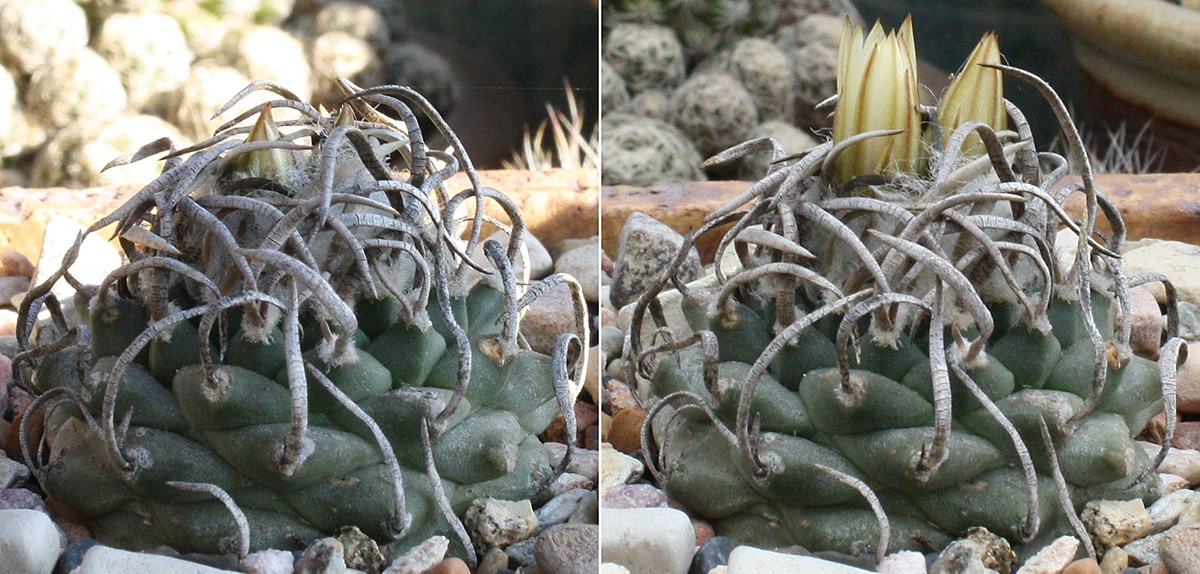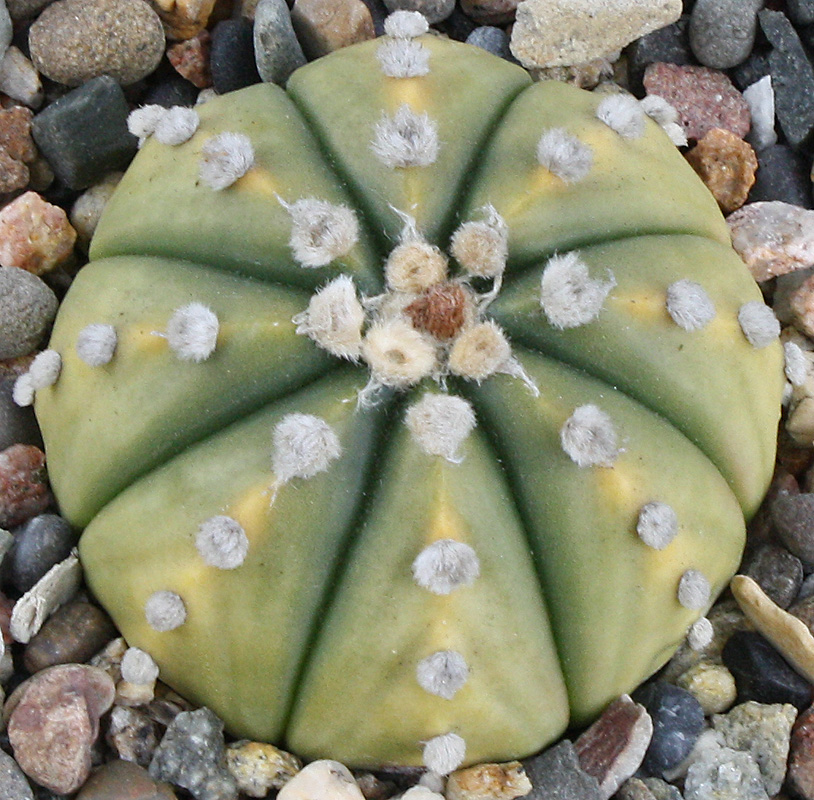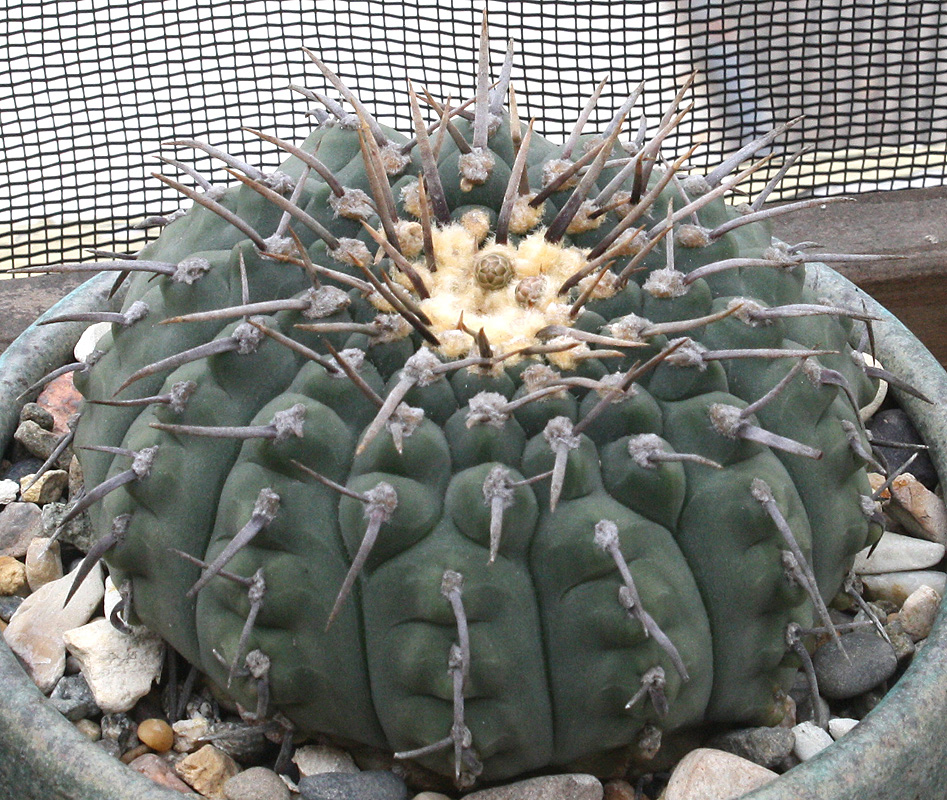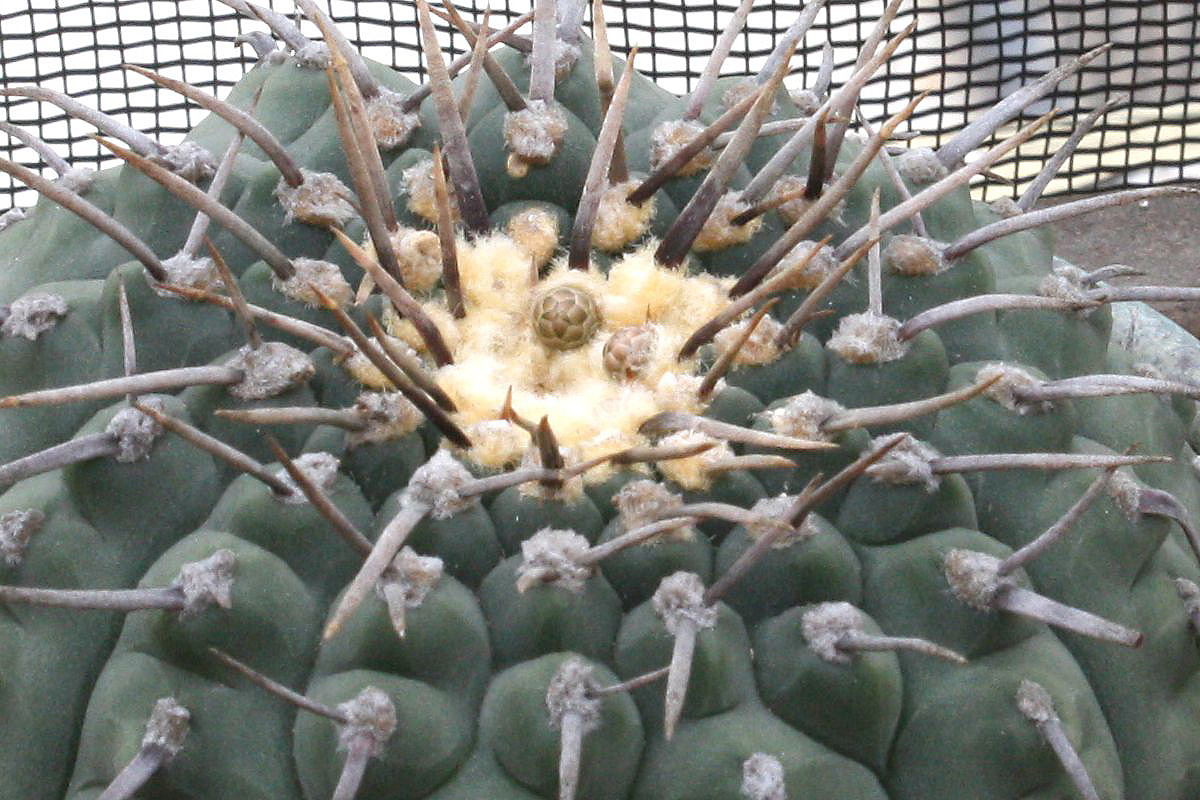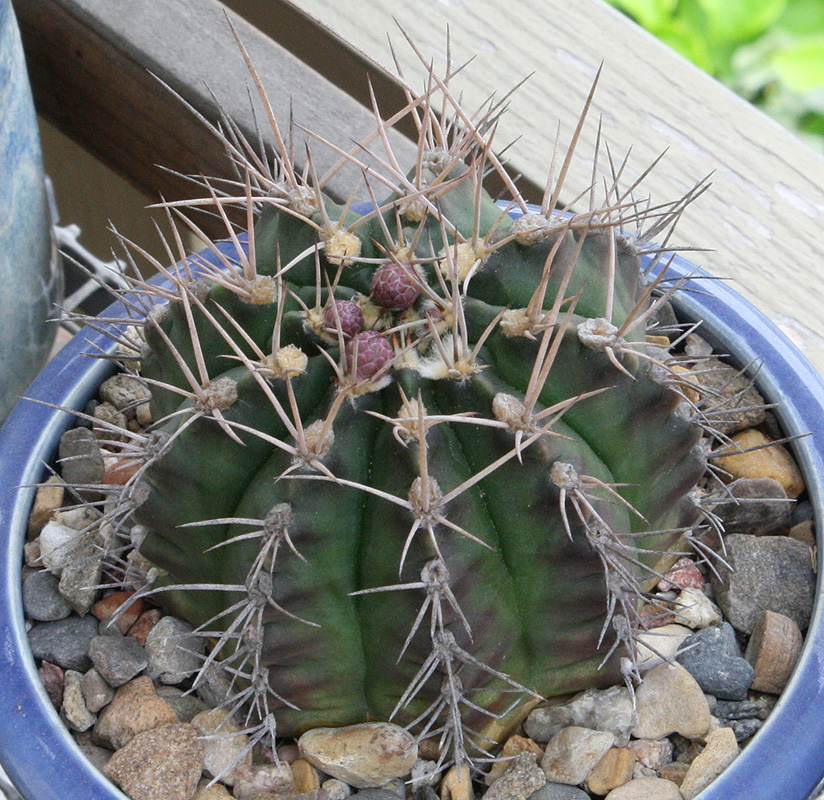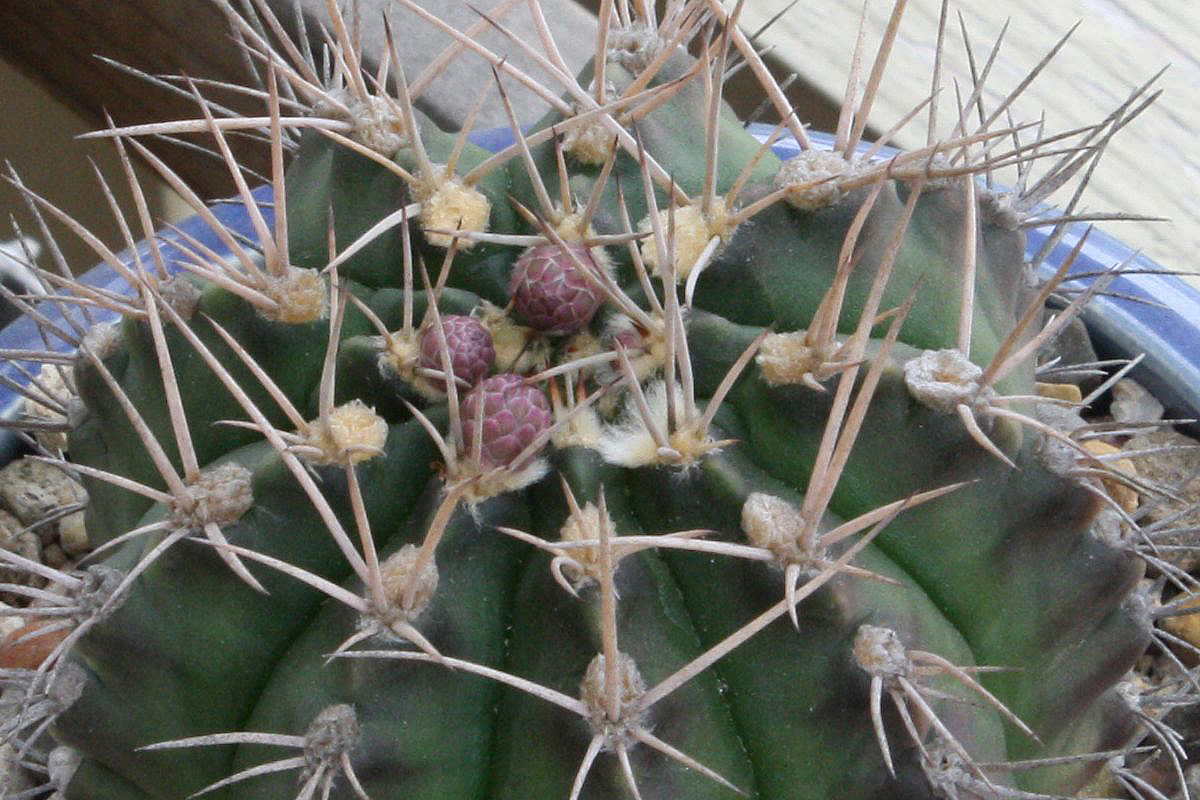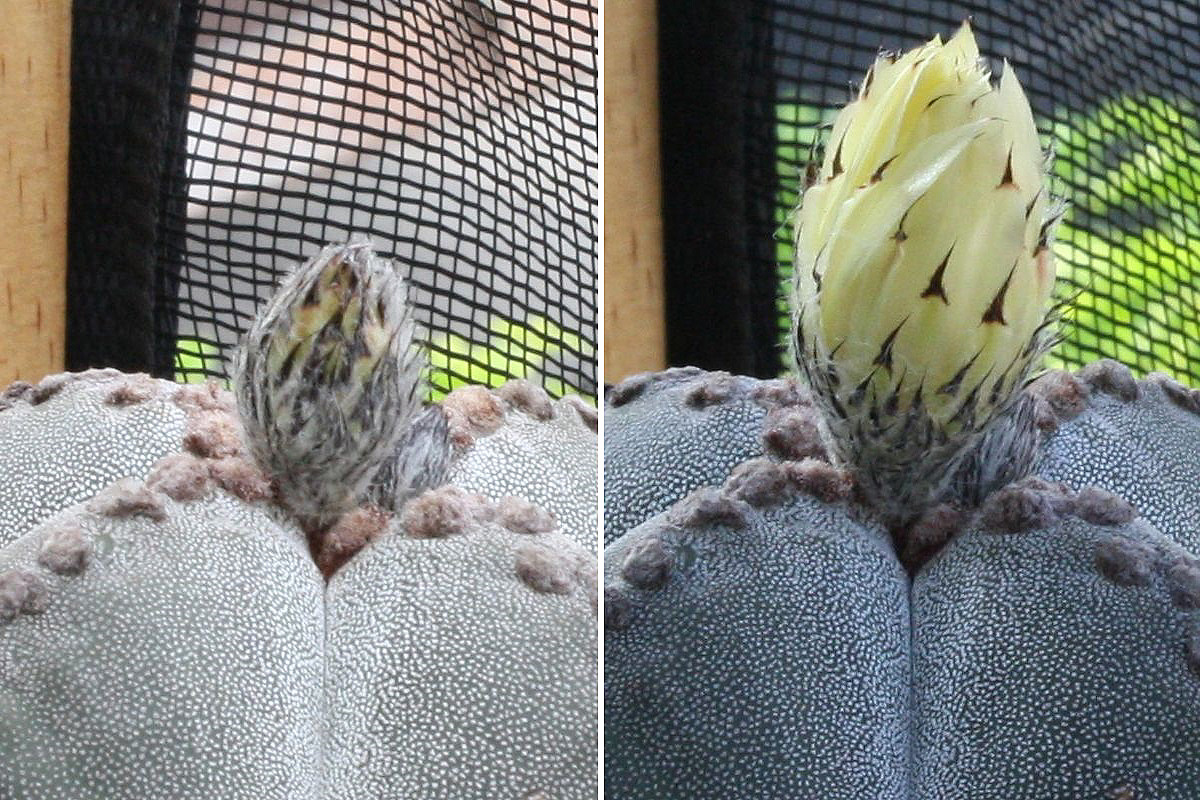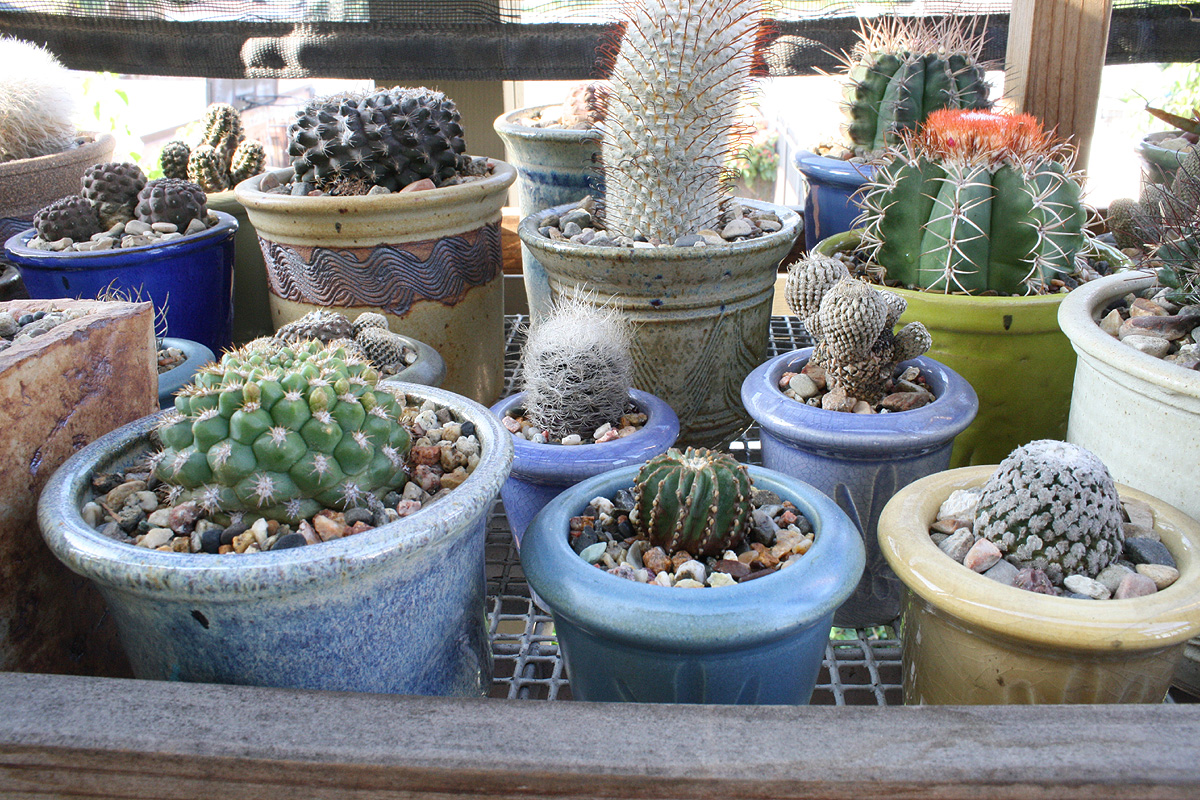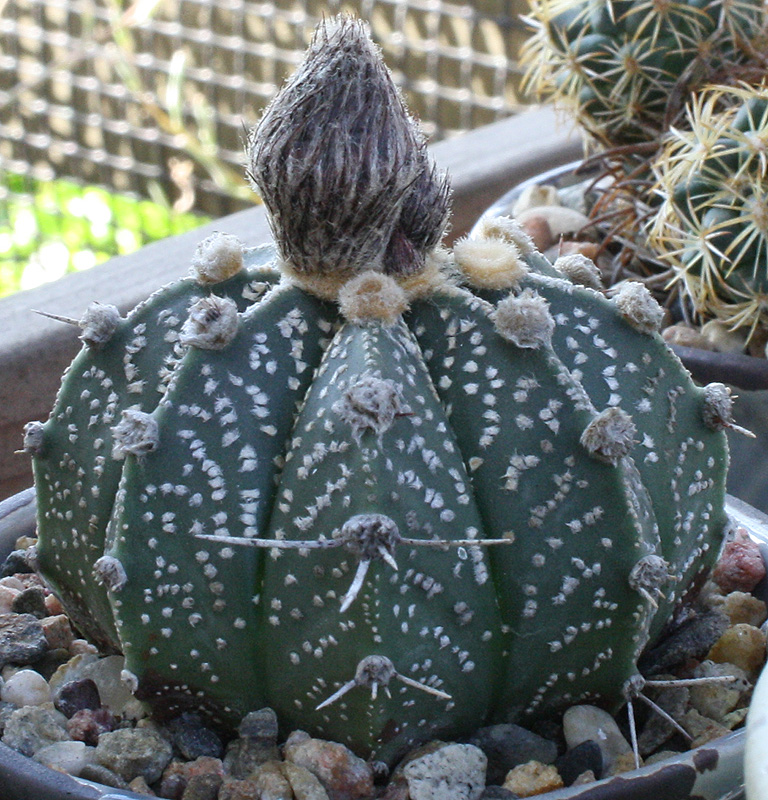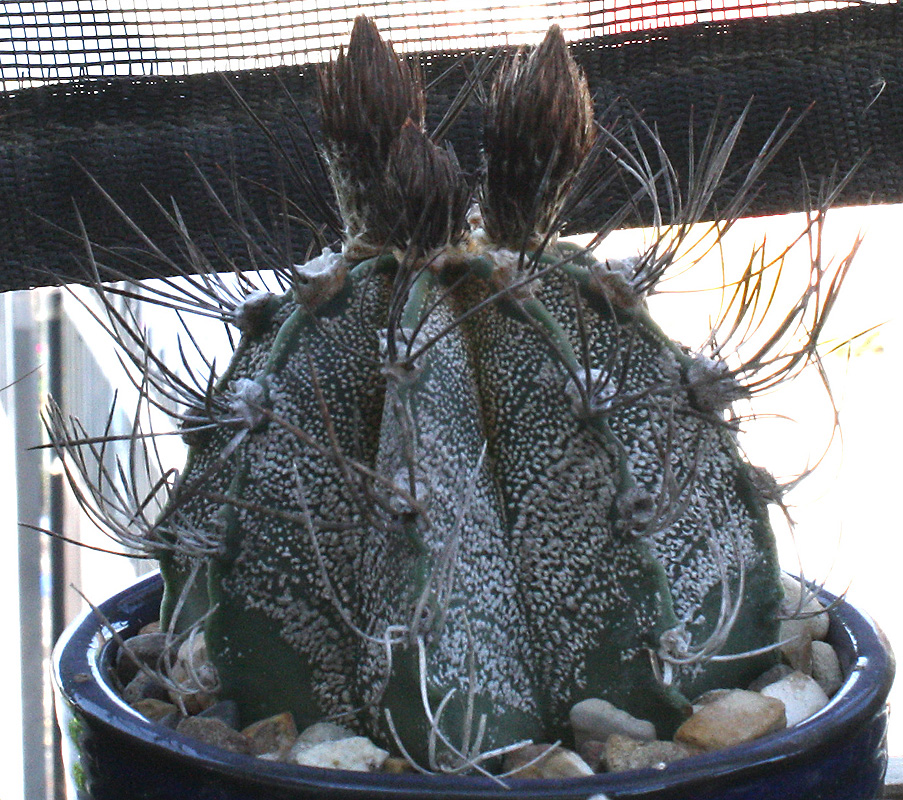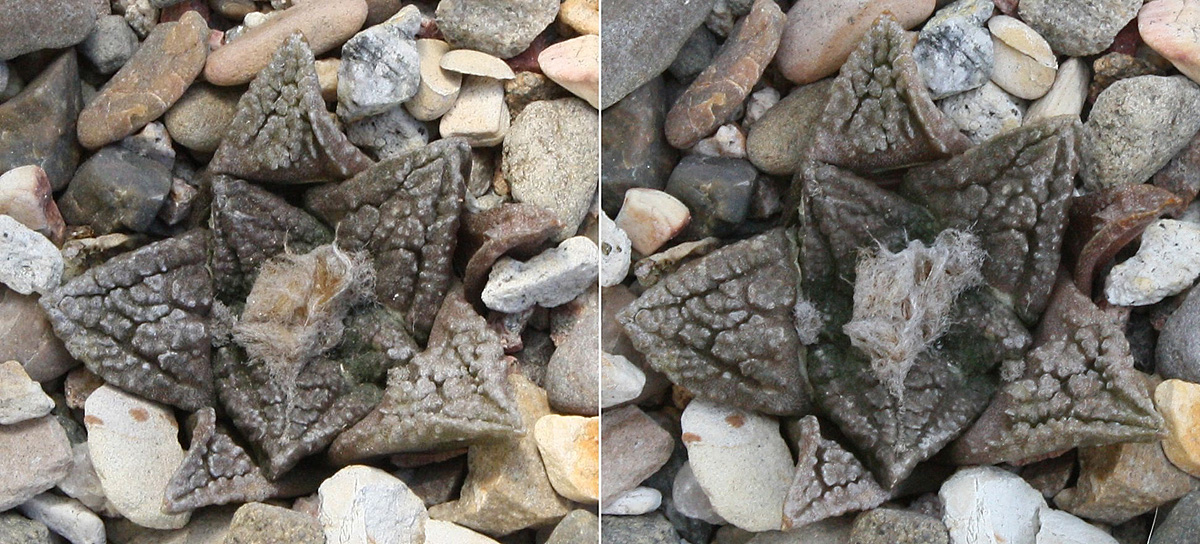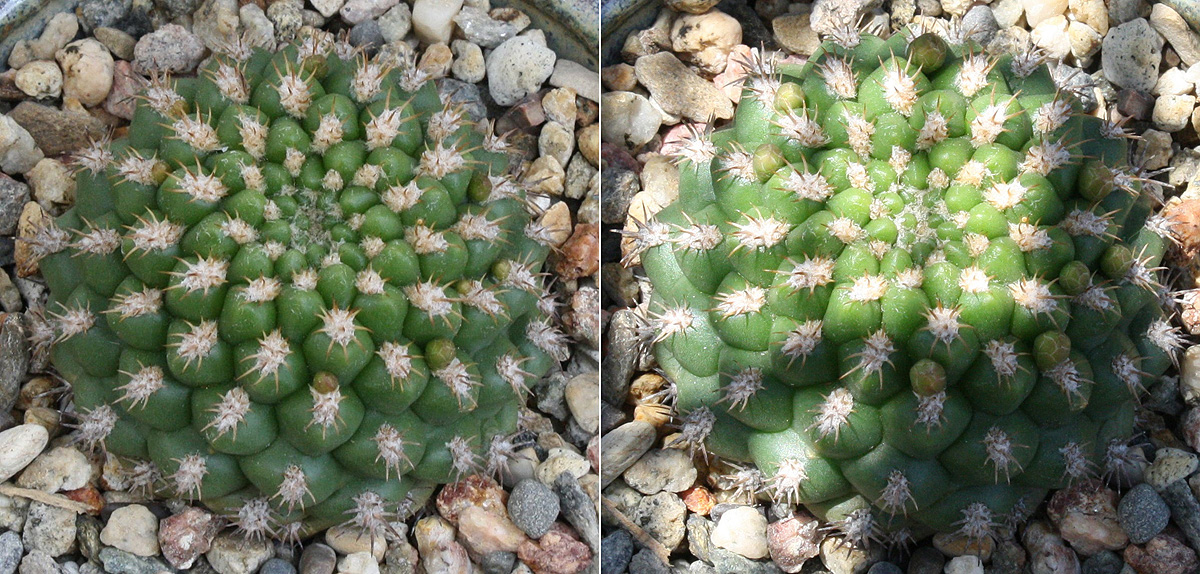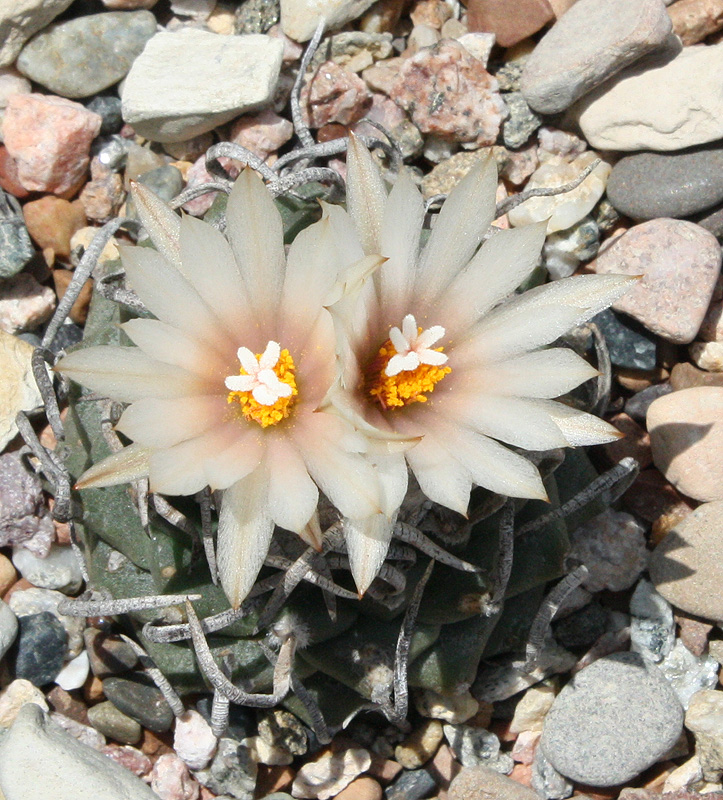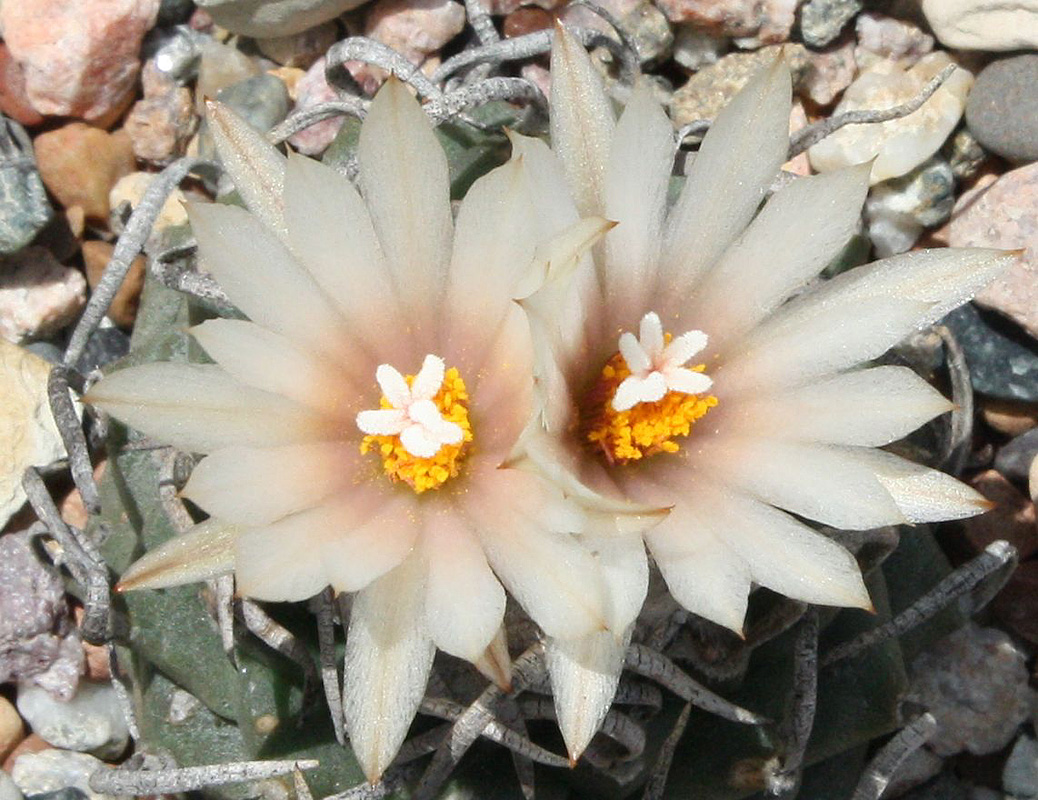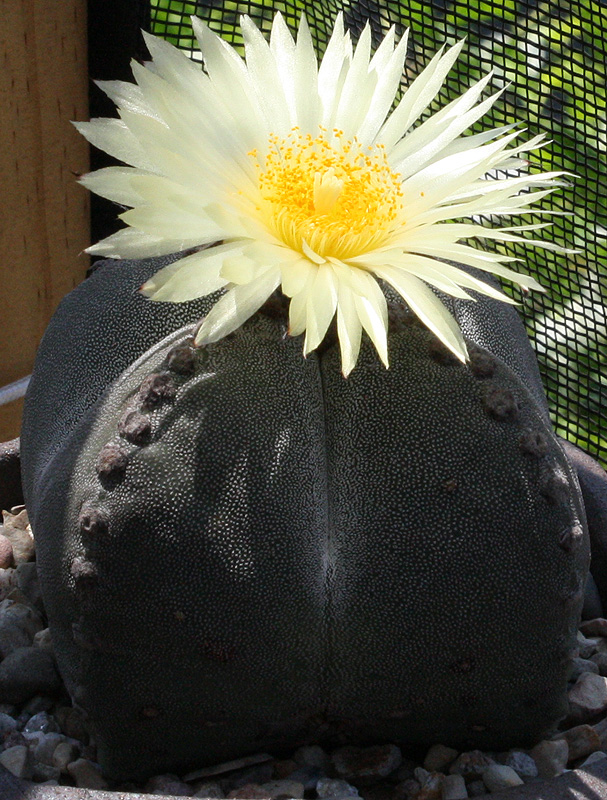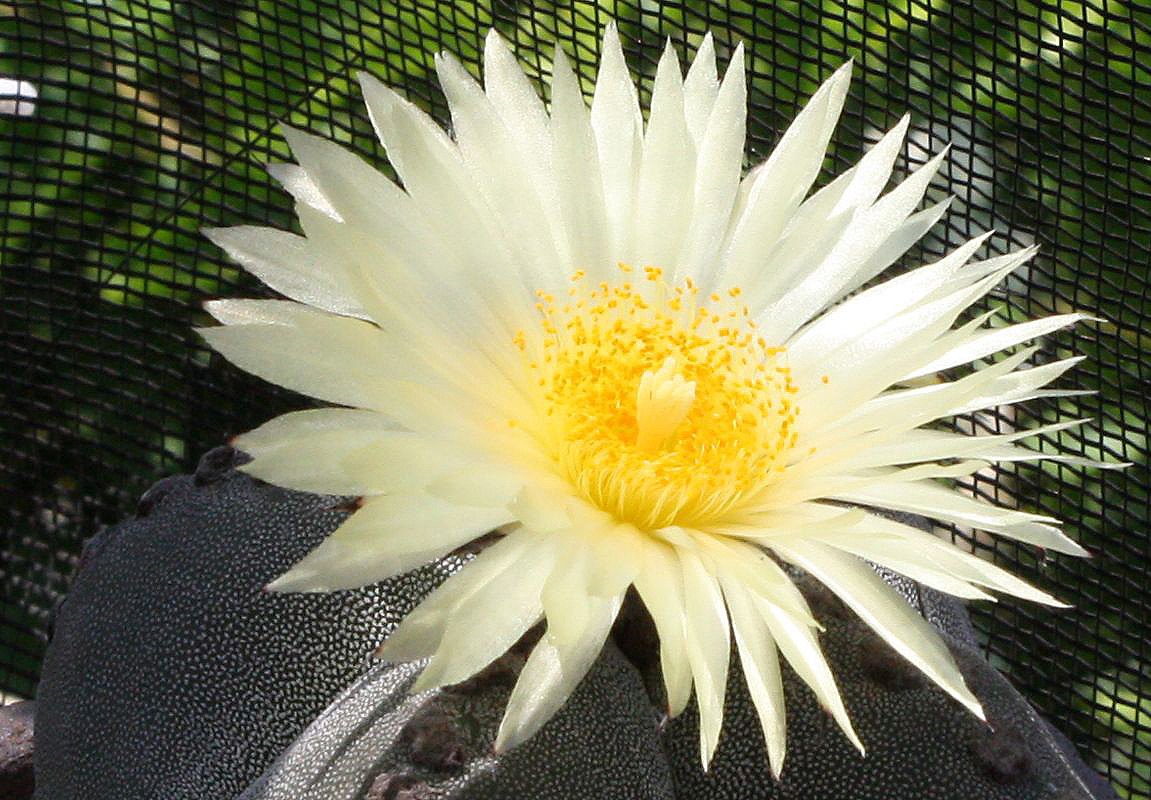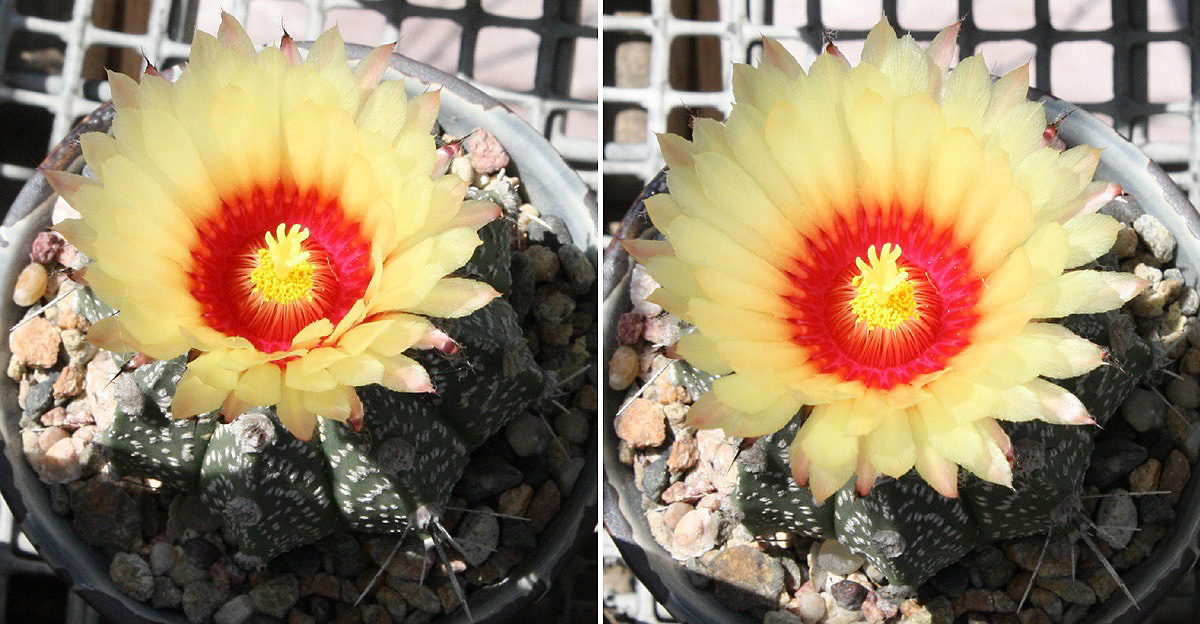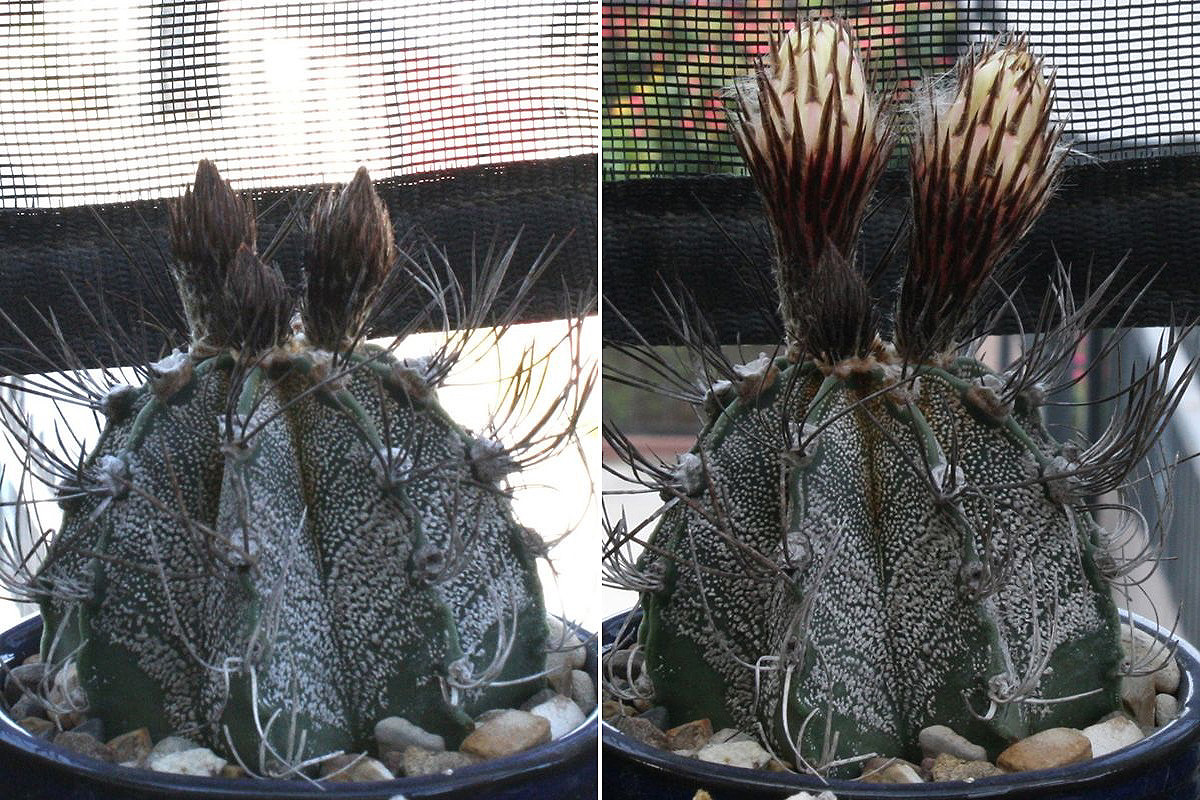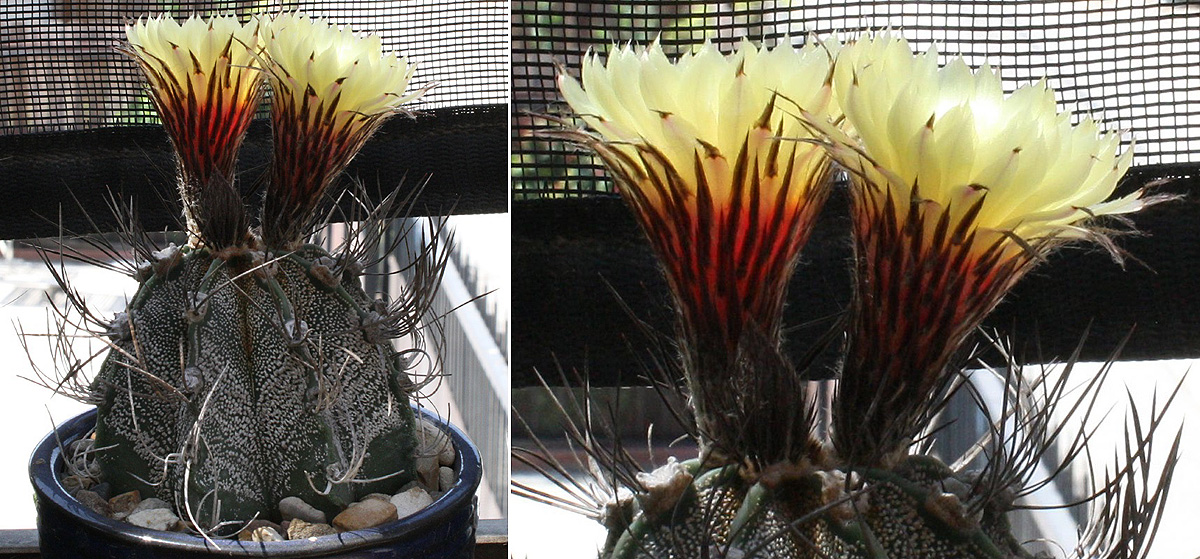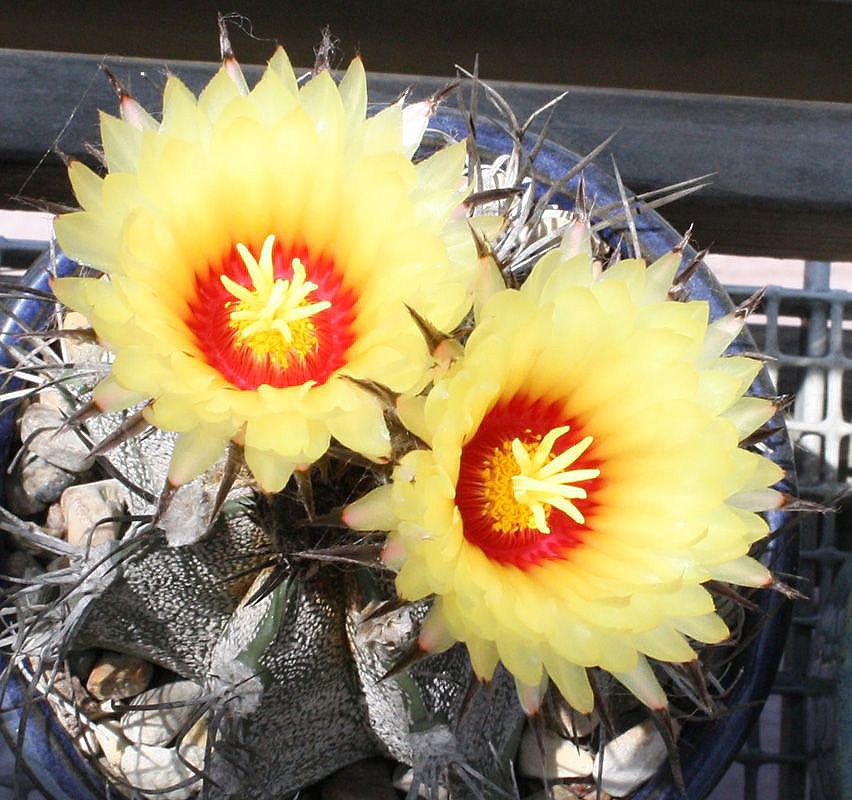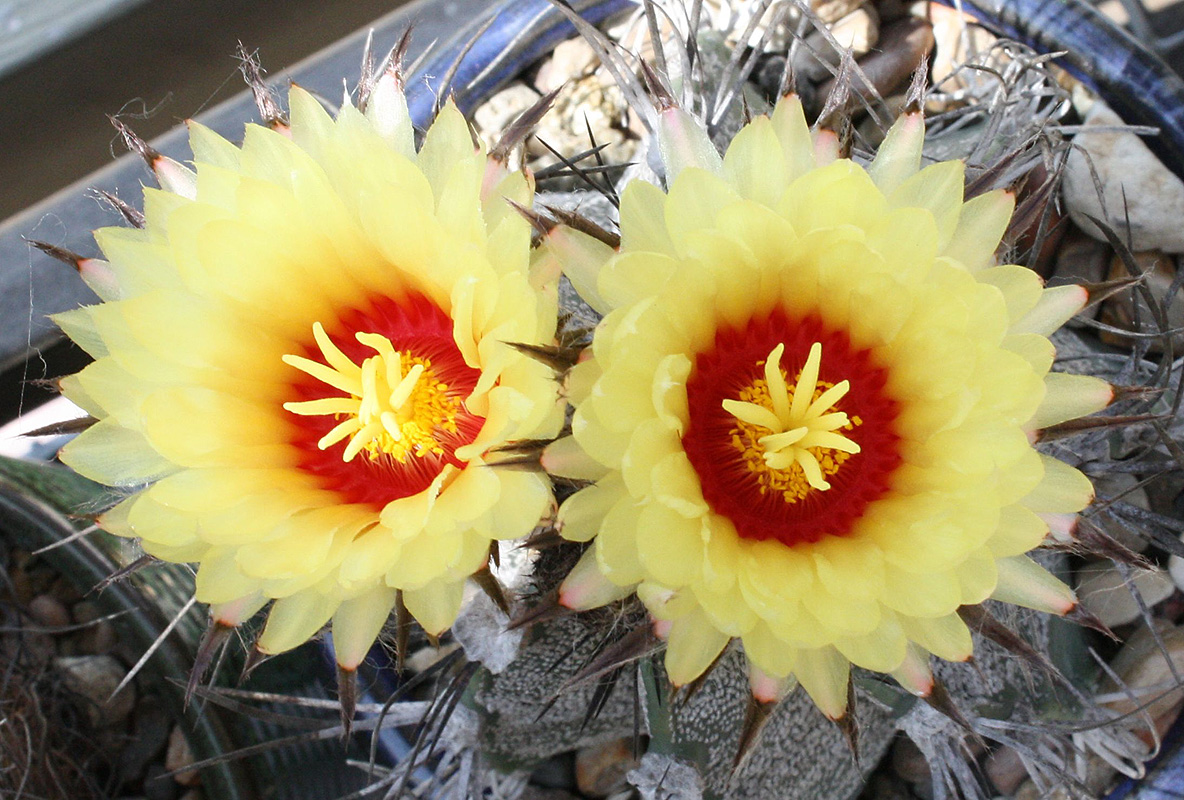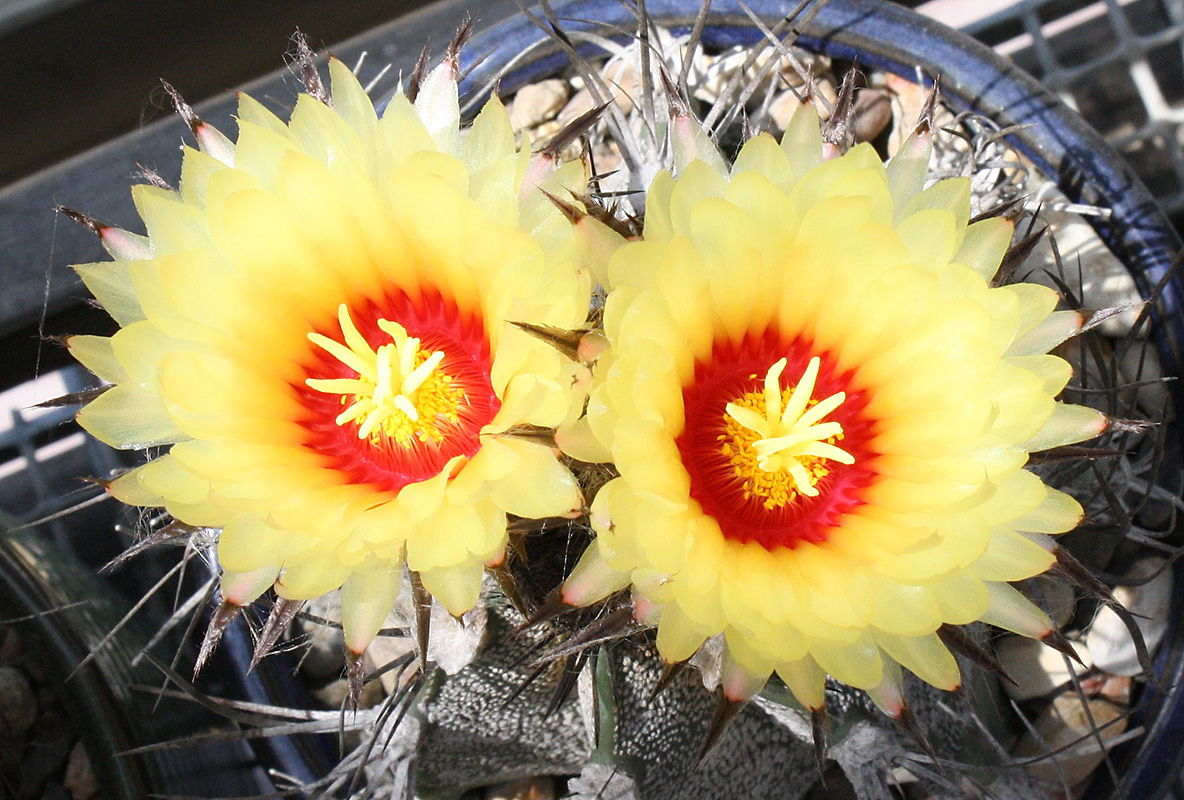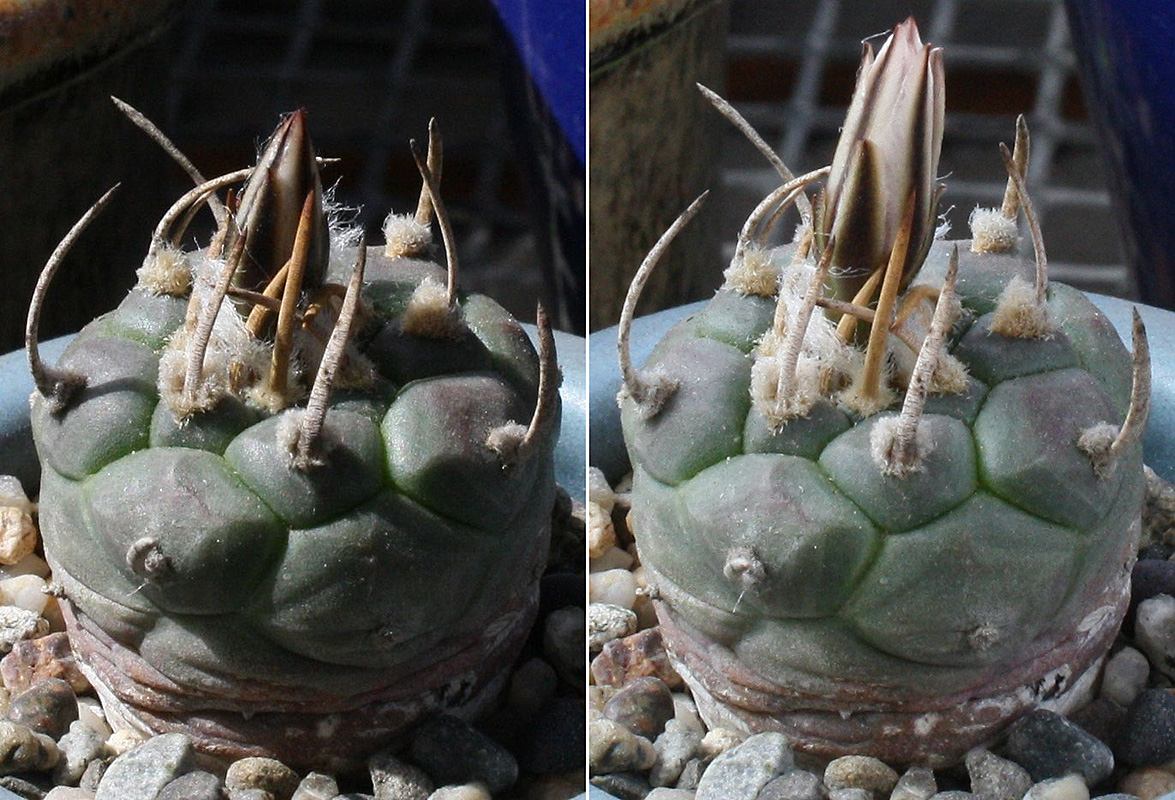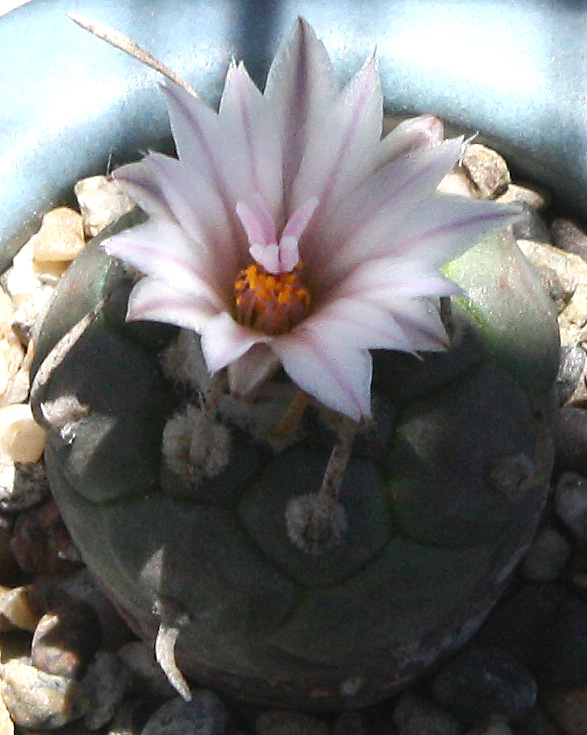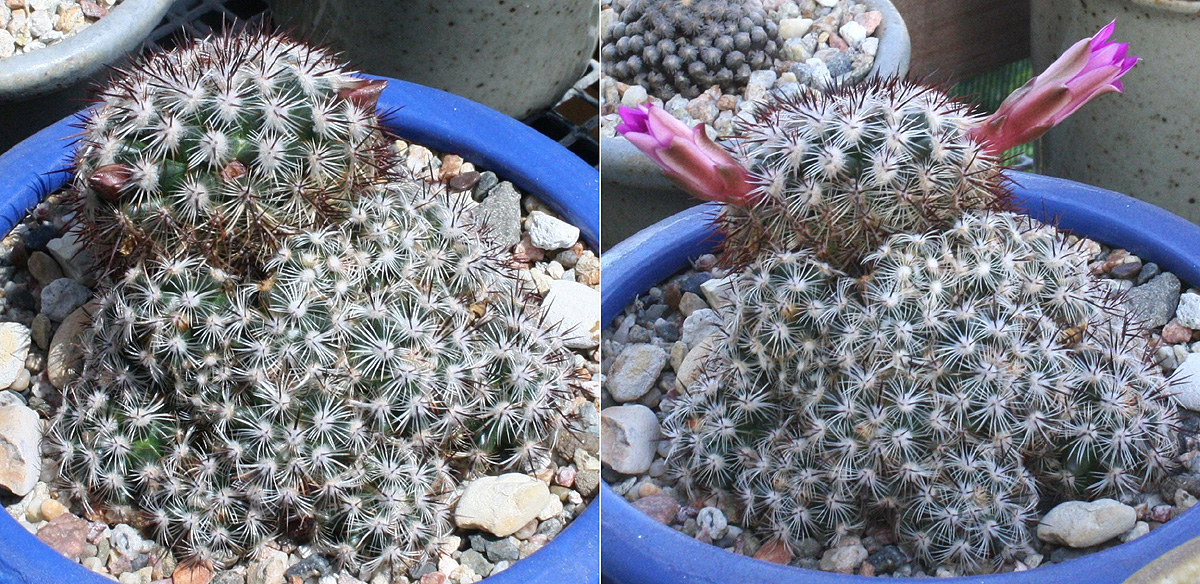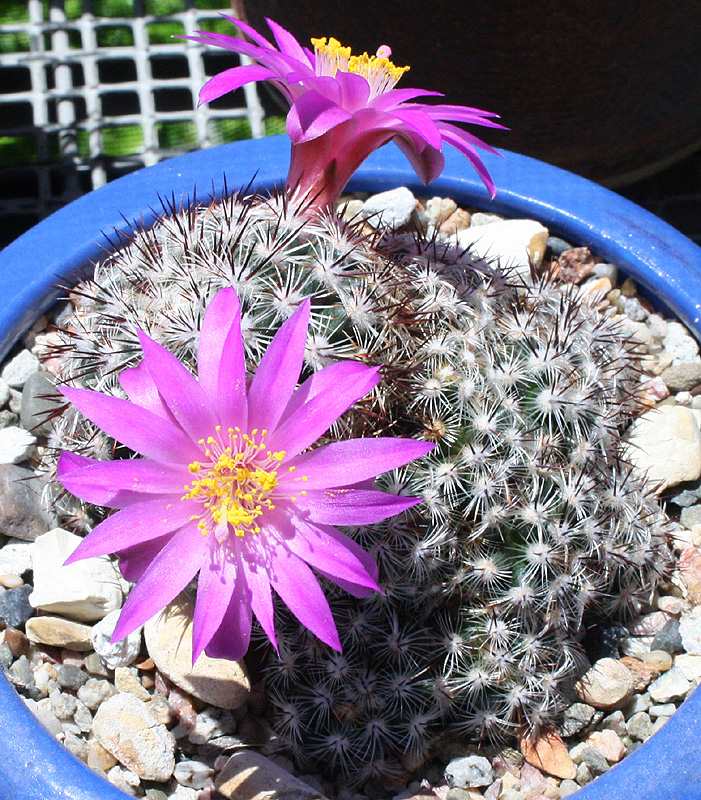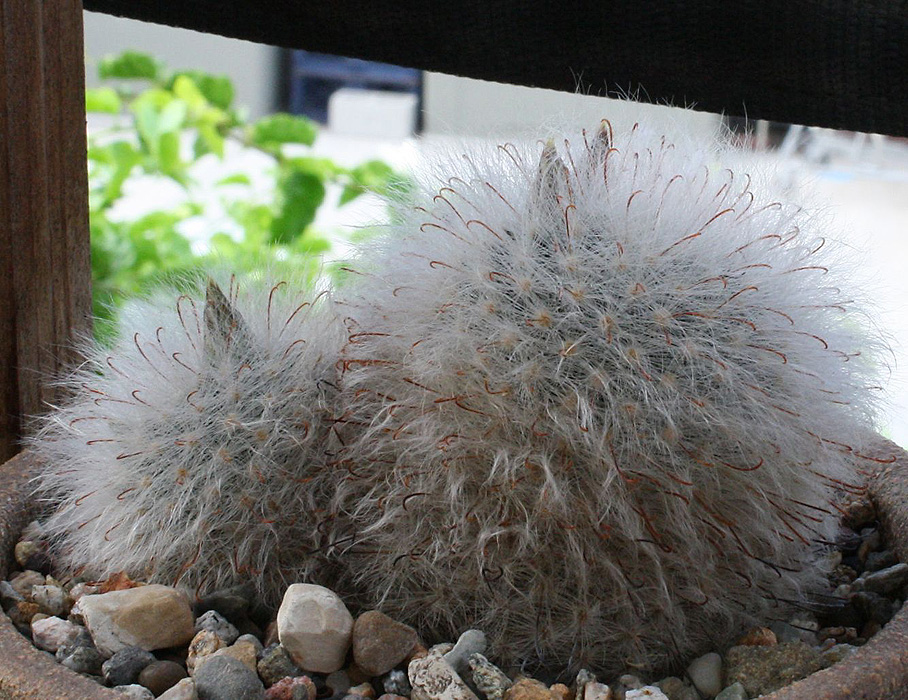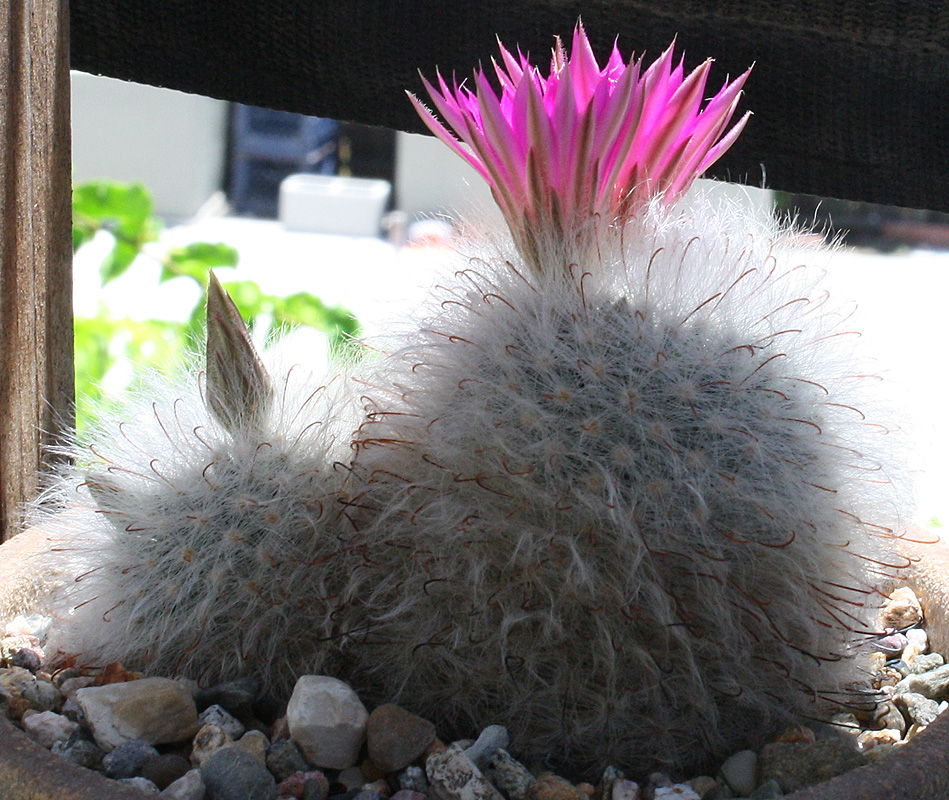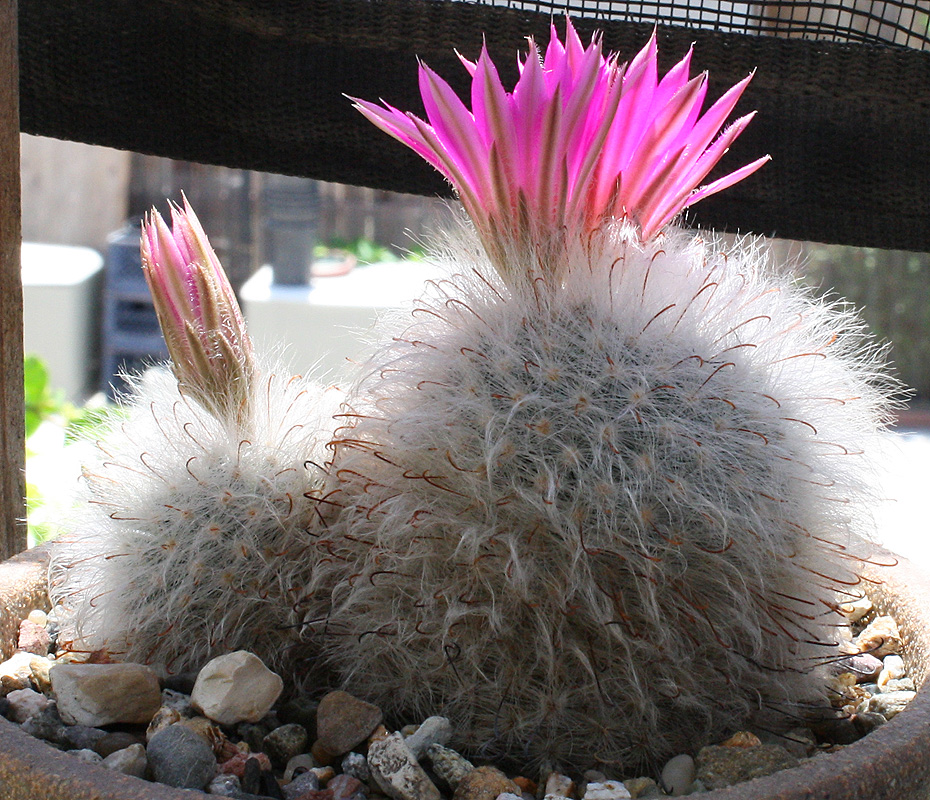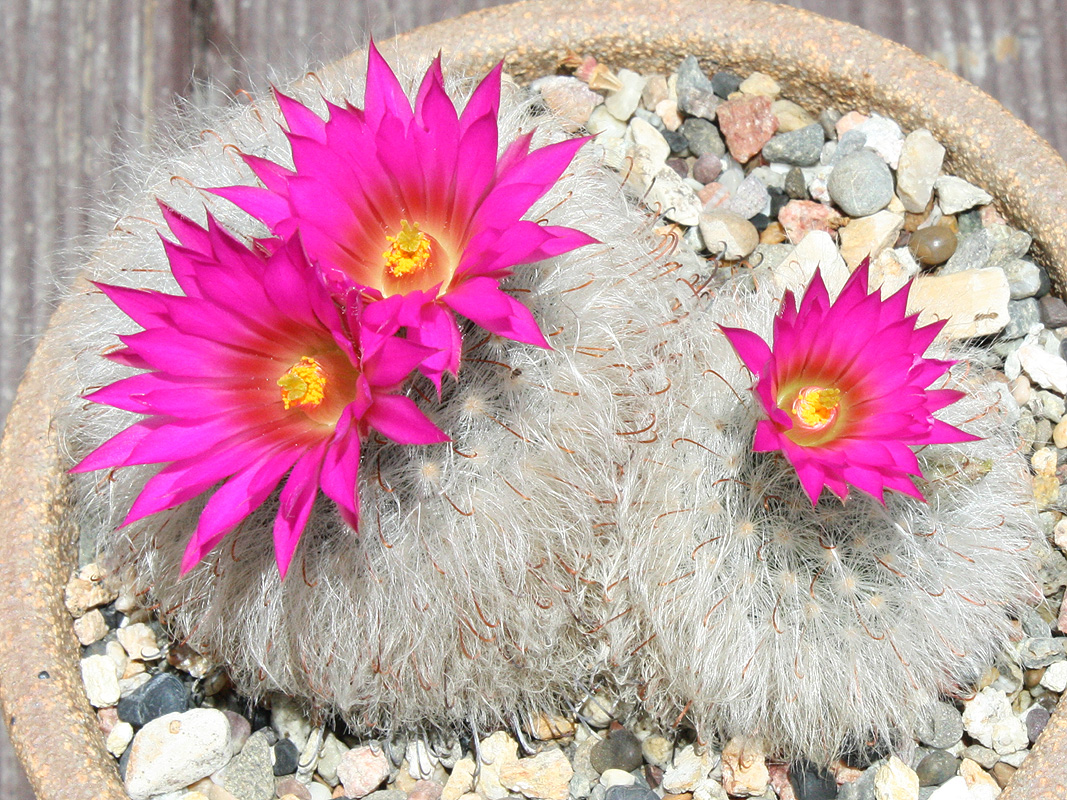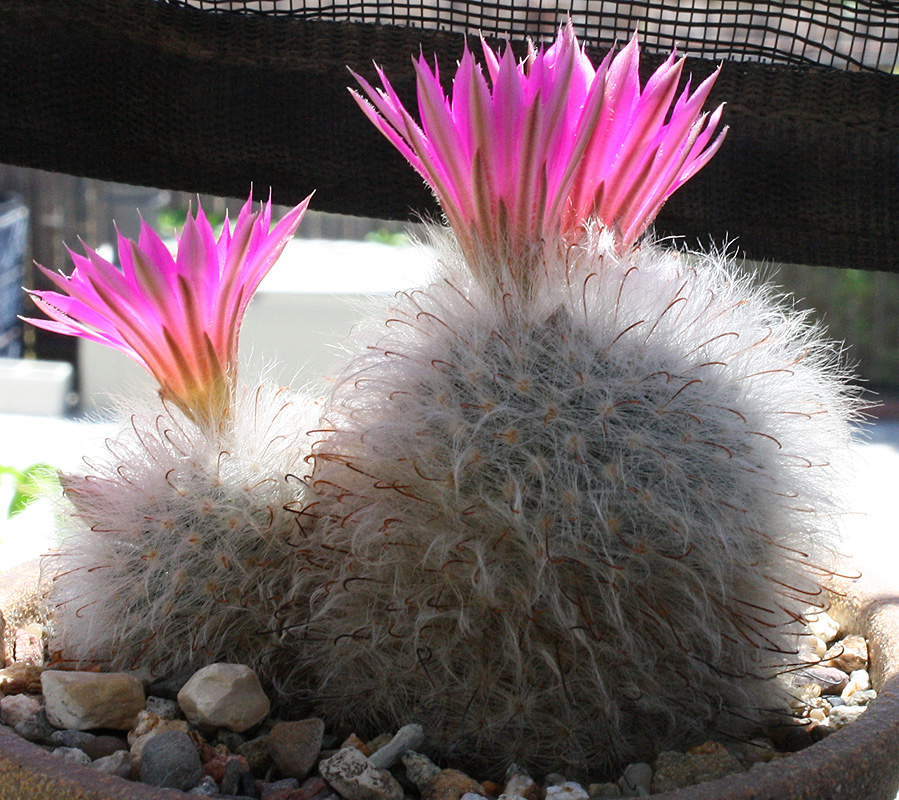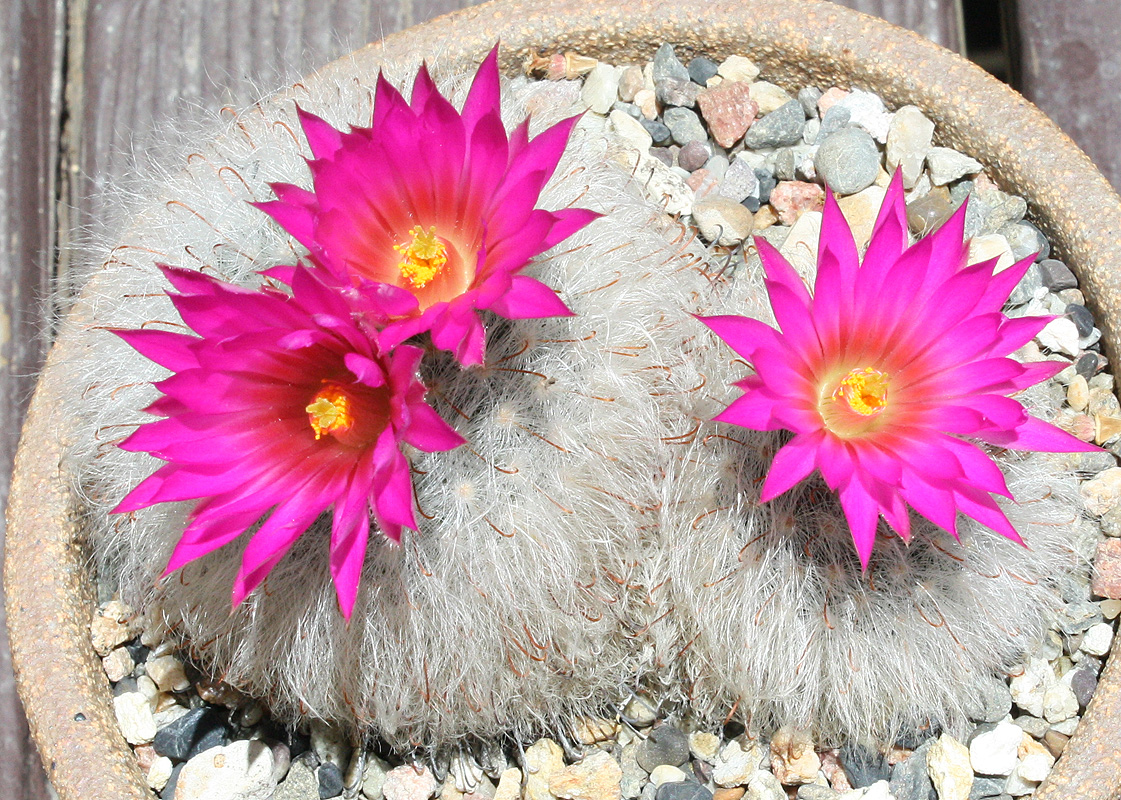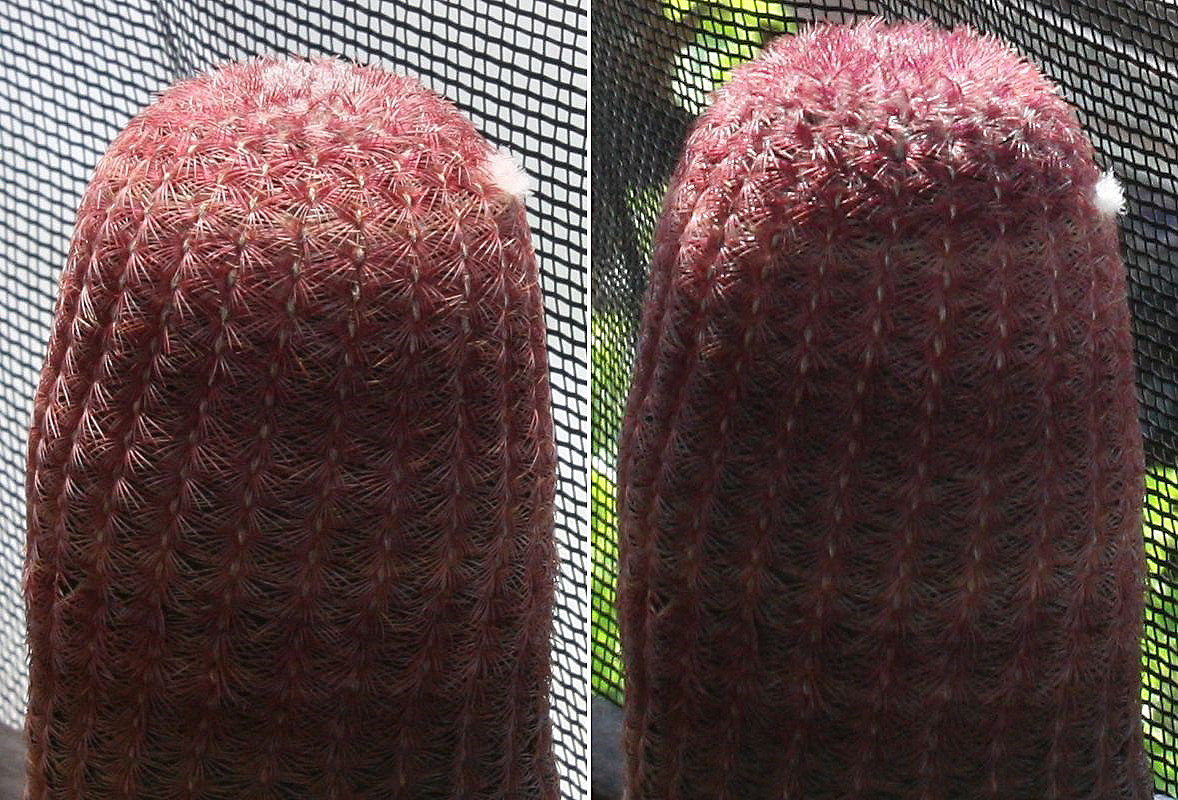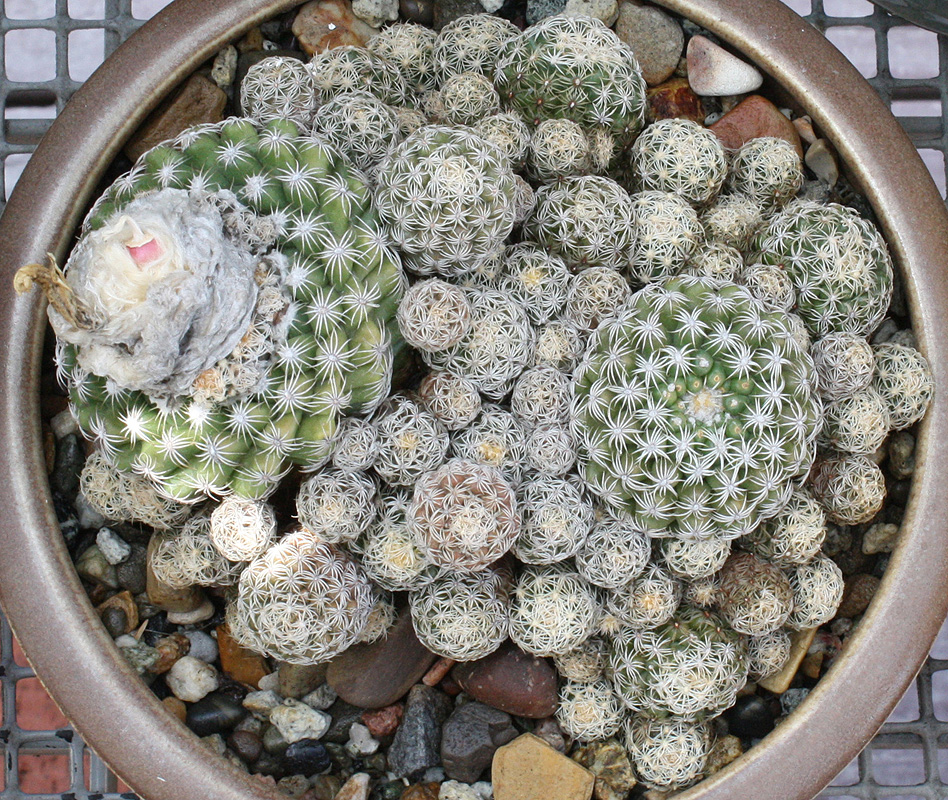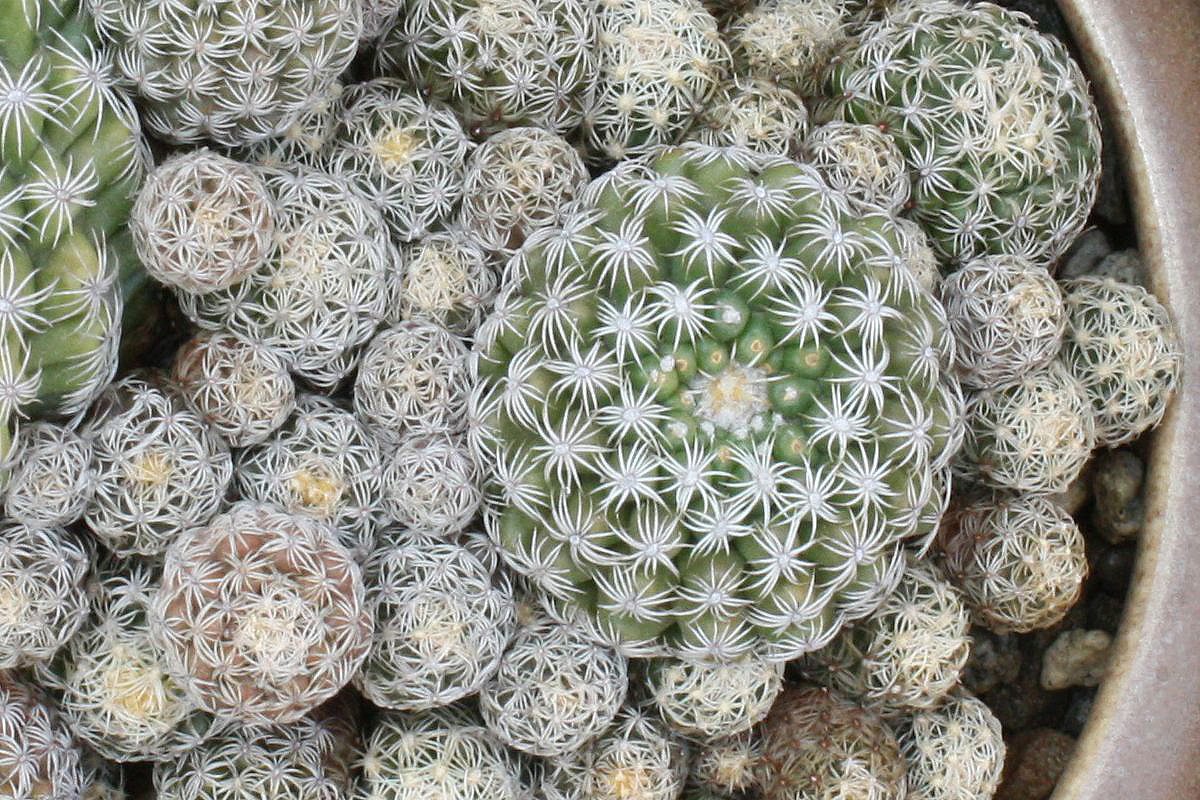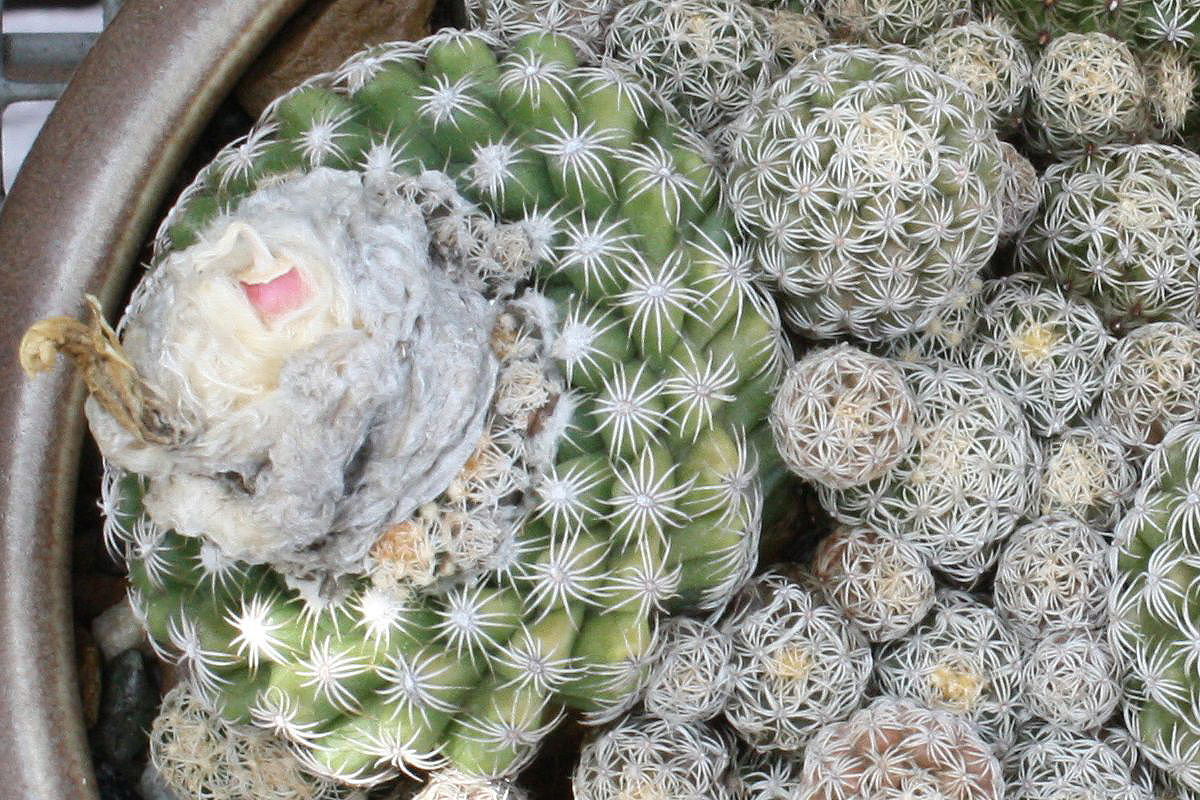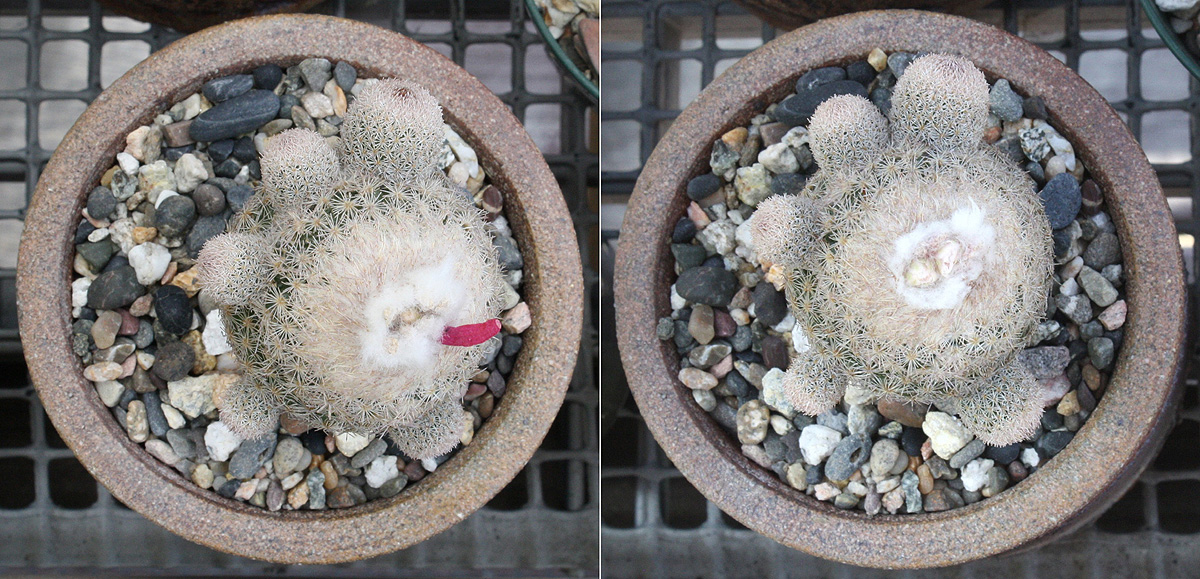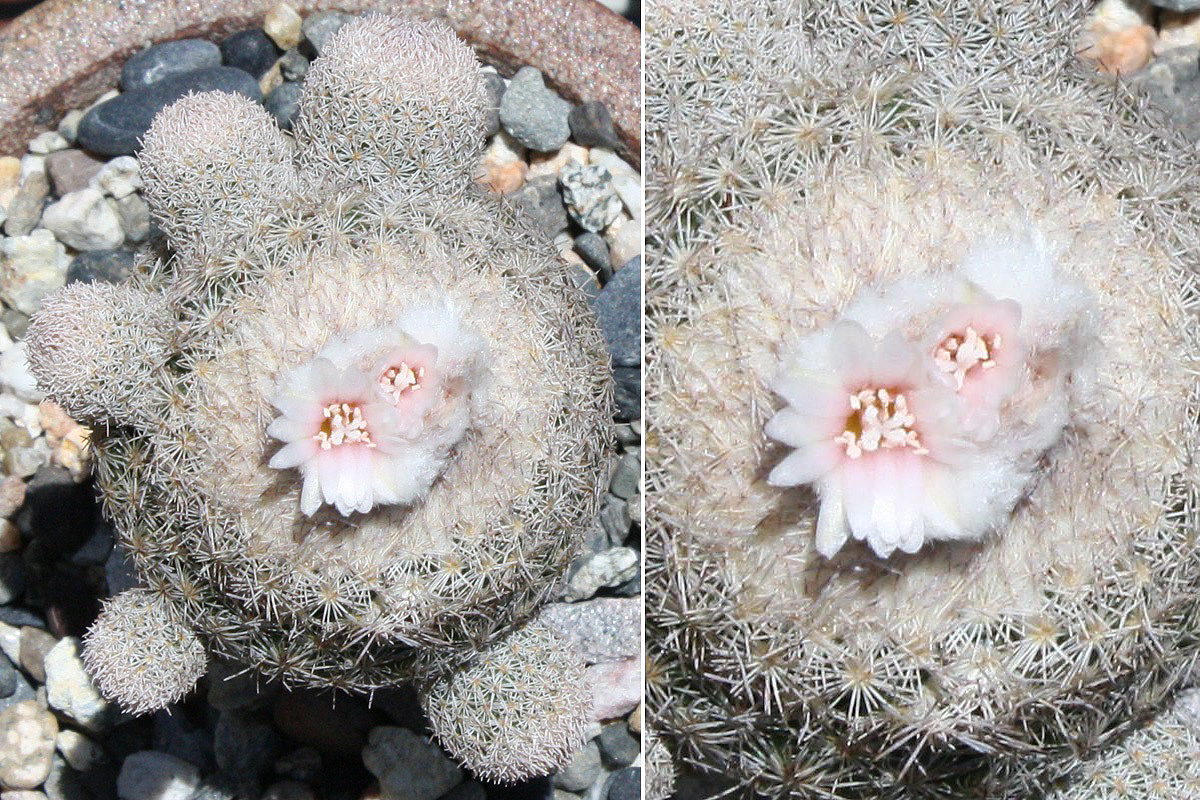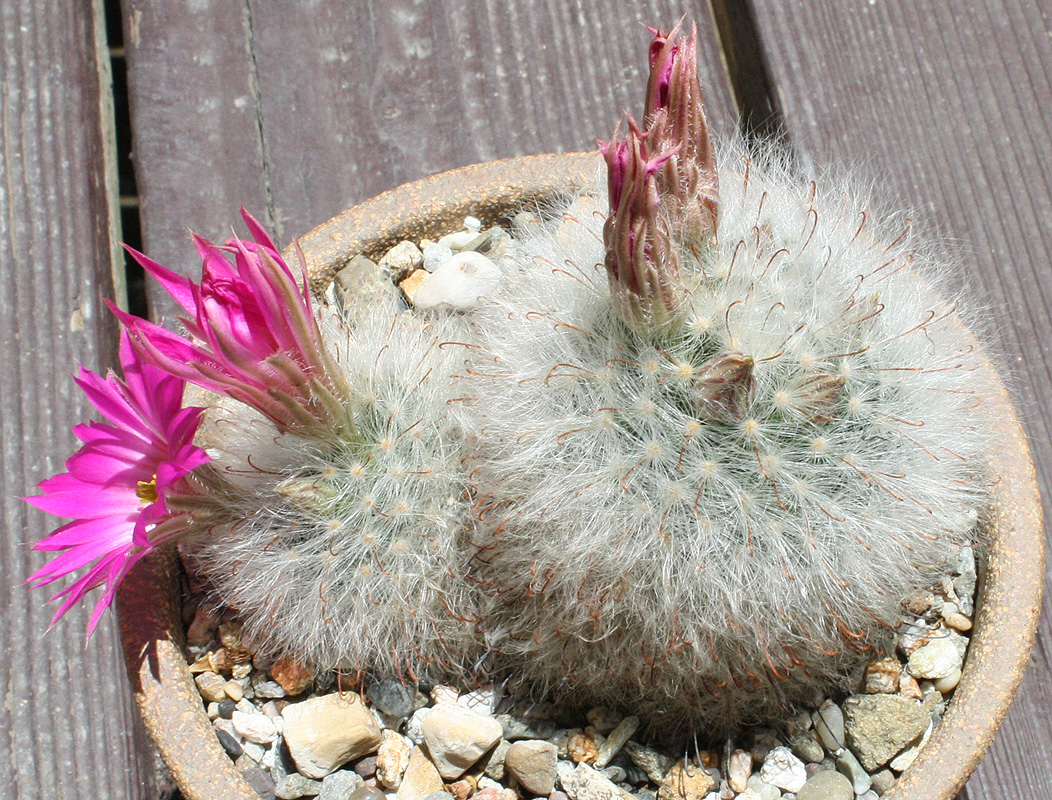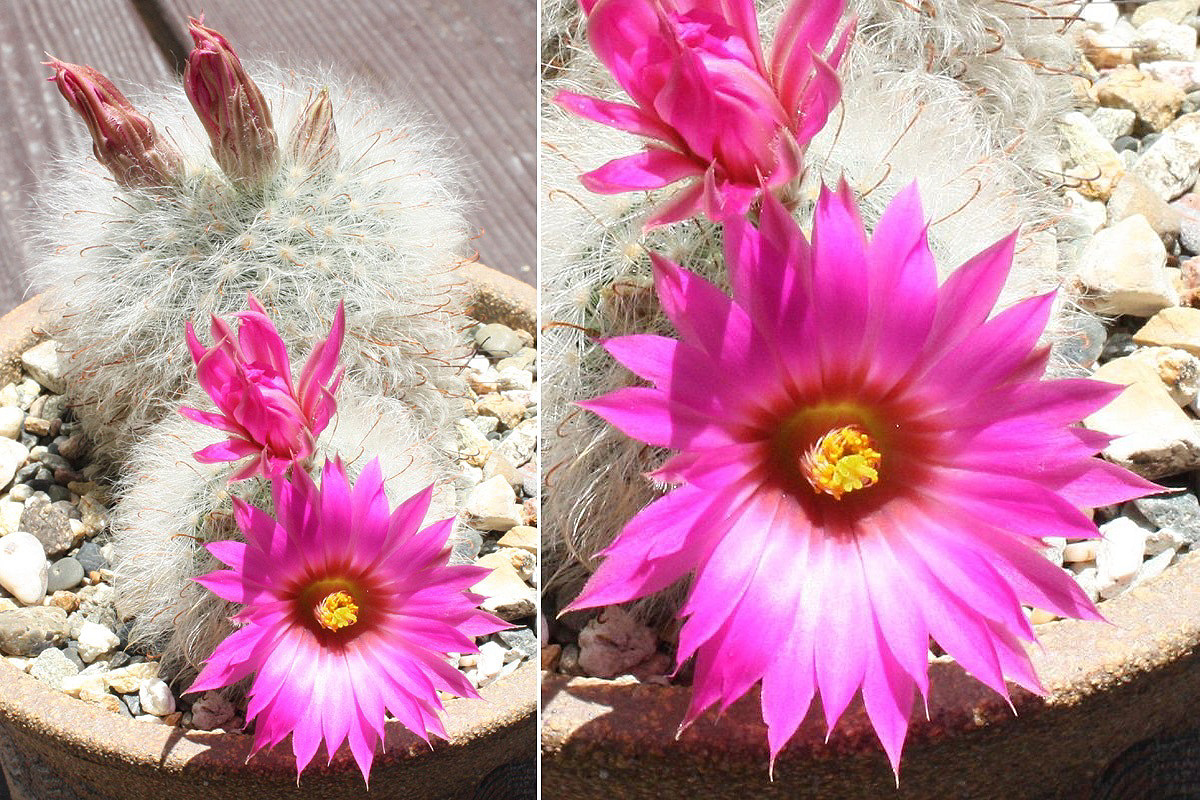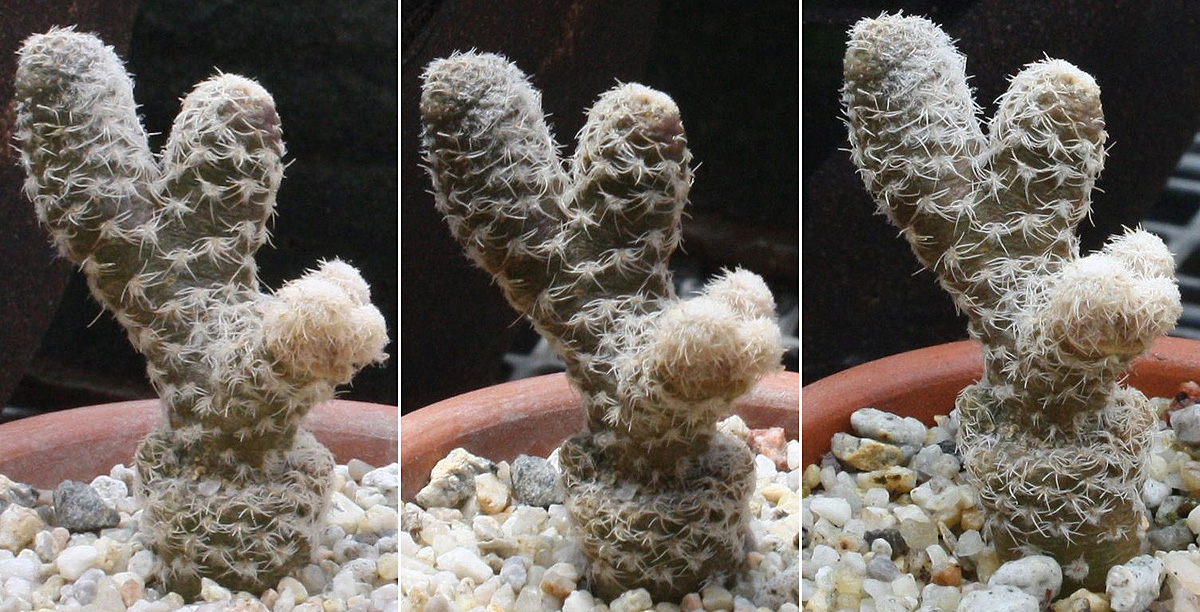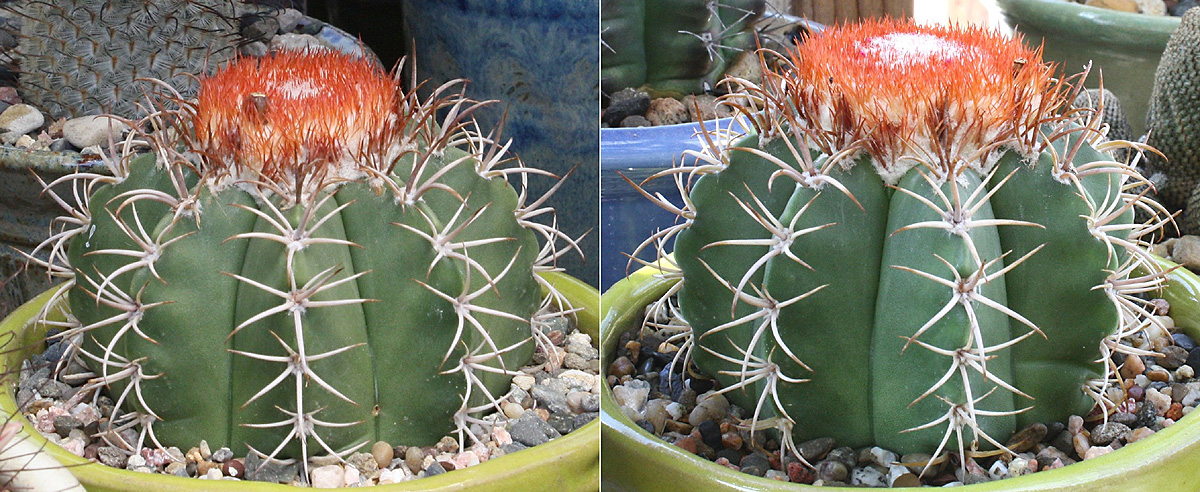Hard tap water is a fact of life for many -- if it's left untreated, bicarbonates (primarily Calcium bicarbonate) build up in the pot, slowly robbing our plants of the ability to take up sufficient water and nutrients through the roots. But if you water your plants with acidified water, they'll thank you for it many times over. To get the full benefits of acidification, some way of testing the pH will be important. Without that crucial bit 'o info, you won't know if your acidification is just right, too much, or not enough. The first method is easiest, using colorimetric indicator dyes you can buy at any hydroponic store. Unfortunately it's also inaccurate, and by quite a bit. The other -- and much better -- method is a pH meter.
When I started acidifying my water in early 2012, Darryl Craig (CoronaCactus Nursery) was still active on the forum, and he said "a pH meter is the only way to go". He was also the one who recommended going soil-less with a pumice-granite mix and Dyna Gro All-Pro 7-7-7. The results have been speaking for themselves ever since, so many thanks wherever you are, Darryl!

The screwdriver's purpose will be obvious once you start using it. The meter also comes with instructions -- not difficult to figure out, but please follow them. (Any negative reviews you see on Amazon were generated by people who clearly weren't paying attention in class!
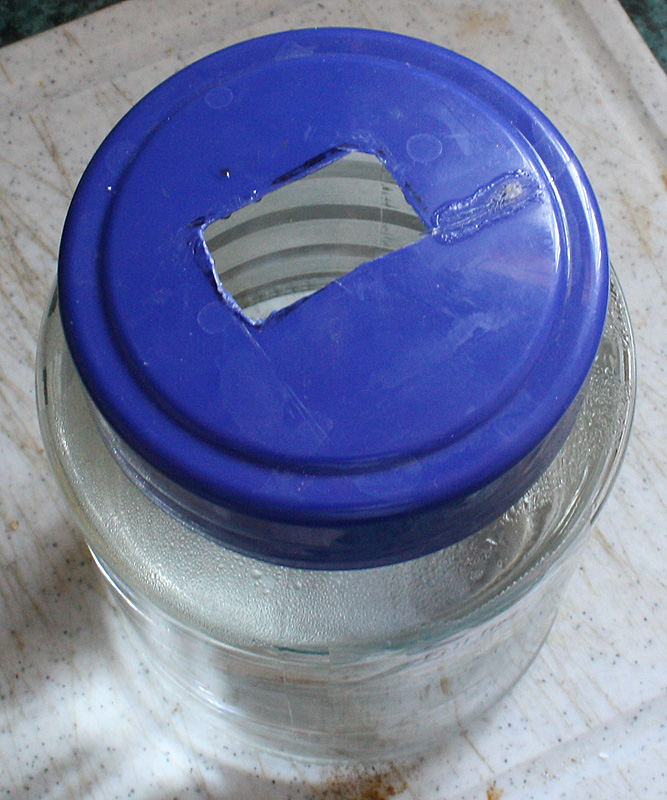
If you cut the hole to the proper fit, you're all set:


It'll take a verrrrrrry long time before you lose too much water to evaporation, so this arrangement is a wonderful way to keep the electrode wet without having to constantly "babysit" the water level. Here's another important note you'll see in the instructions -- distilled water will ruin the electrode, and it's the ions in plain old tap water that'll keep it going. The initial calibration procedure sets the meter to 7.0 (pH-neutral), but the pH tends to creep up a little when you store it in the water jar. When you buy your pH 600, you'll also need to buy a bottle of 7.0 reference solution (available on Amazon here or at your local hydroponic shop). The reference solution and the screwdriver that came with the meter will allow you to calibrate it back to 7.0 right before you test your acidified water. And that, my friends, is how you get accurate readings. Now I'll give you some of my own instructions on the preparation of acidified water as it is properly tested with a pH meter:
1. Fertilizers tend to lower the pH a little, so whenever you fertilize, put your fert into the water first, then add vinegar. You'll have to do some guesswork initially, but if you start with a teaspoon of vinegar, the meter will give you a rough idea of how much more you'll need to add. When you get closer to your target pH, add smaller amounts and keep testing the water with your meter. If it goes below 5.0, you've over-acidified -- dump out the water and begin the process again. Once you hit the target, make a note of how much vinegar you used.
2. The pH of tap water can sometimes fluctuate (usually higher in summer and winter than spring and fall), so it's a good idea to periodically test the pH of your acidified water. Not sure that we need to do this every single time we water our plants, but it should be a standard part of your practice at least once a month and/or when you skip on the fert from time to time.
3. Sources discussing acidification recommend a wide pH range of 5.0 - 6.0. Although mixes don't have a pH factor when they're dry, they can alter the pH of the water being taken up by the roots of our plants. For those of us OCD-driven growers who don't like to guess about anything, here's an extra step you can take:
A. Fill an empty pot with your mix of choice and drench it through and through.
B. Capture the runoff in a container -- make sure you have plenty.
C. Filter the runoff with a paper coffee filter and funnel.
D. Now that you have clean runoff water, test it with you meter, and you'll get the final pH.
What we're doing here is essentially a "slurry test" to determine if the mix has a neutral, slightly alkaline, or slightly acidic effect on the water going to the roots. Ideally, the runoff water should be approximately 5.5 (a few points plus or minus won't matter). If it's above 6.0, add a little more vinegar. If it's below 5.0, reduce the amount of vinegar. Once you determine the correct amount, you'll need to run the slurry test only once unless you change your mix.
And finally, the pH 600 is a rugged, reliable instrument -- treat it well, and your meter should last a good long time.











